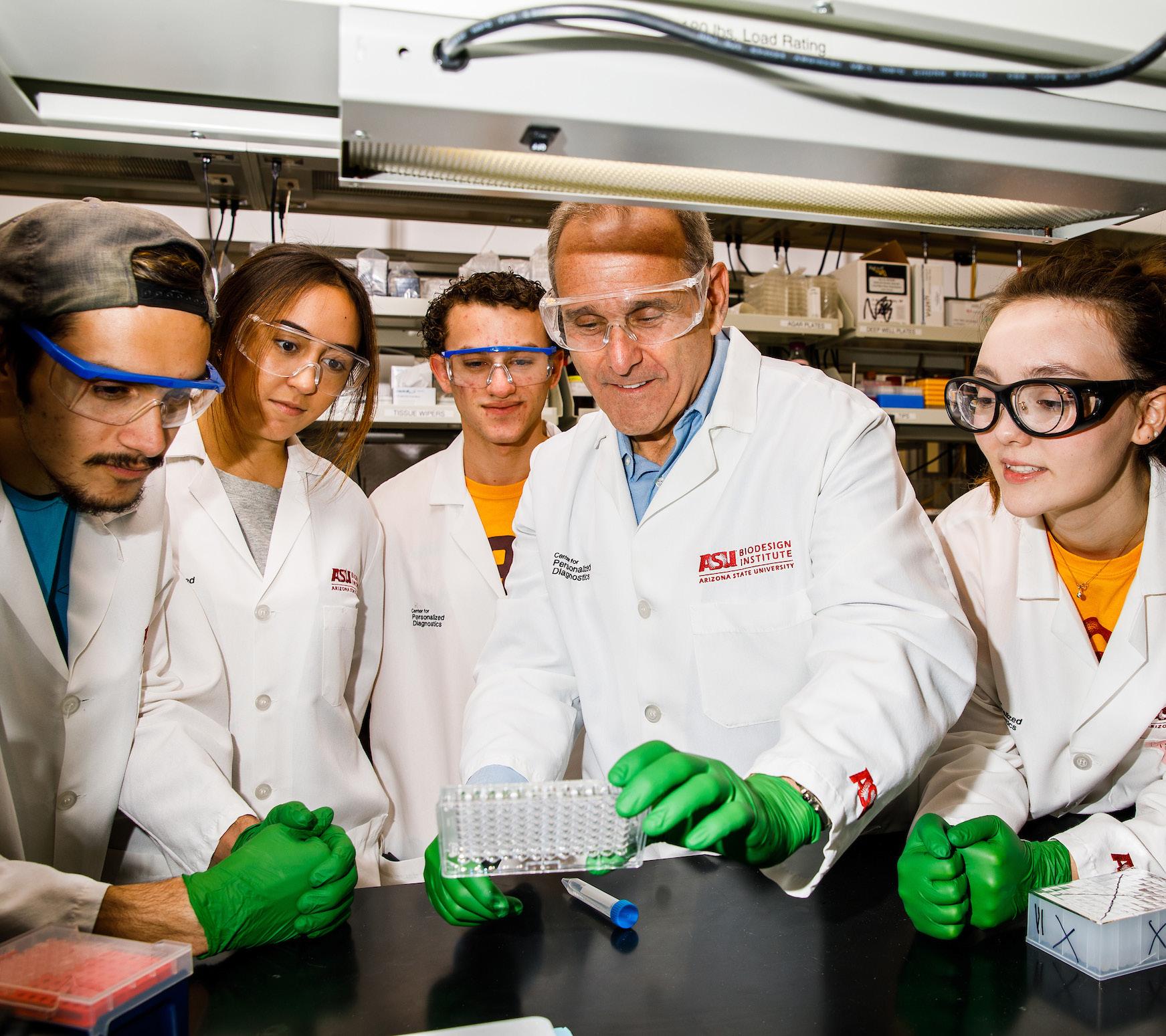
1 minute read
Teaming up to save lives
At the end of 2019, a deadly virus about 100 nanometers in diameter — visible only with an electron microscope — slipped into human society like a thief in the night. It sneaks inside human cells, makes copies of itself and bursts out to infiltrate many more cells, spreading the infection person by person as it tears apart human society on a global scale.
Within a few months, the new coronavirus studded with protein spikes had made its way to every populated corner of the earth, leaving scientists and health officials scrambling to solve its mysteries and stop the spread of COVID-19.
Across Arizona State University, hundreds of researchers, faculty, staff and students mobilized at breakneck speed to apply their skills, tools and expertise to a singular goal: stopping the deadly coronavirus and helping humanity recover from its destruction.
Within six months of the first confirmed case of COVID-19 in the U.S., ASU researchers have:
Set up a clinically approved and certified COVID-19 testing lab.
Stood up and operated sample collection sites throughout Arizona, testing thousands of participants for active coronavirus each week.
Developed the first saliva-based coronavirus test in the western U.S.
Provided critical supplies to local hospitals and health care providers.
Provided key data to track and predict the spread of the pandemic and its impact.
Made free testing to every available ASU student, faculty and staff member.
Teams across the entire university sprang into action to meet the critical need for testing and tracking the virus. More than 80 key players meet at 8 a.m., seven days a week, to strategize and mobilize.








